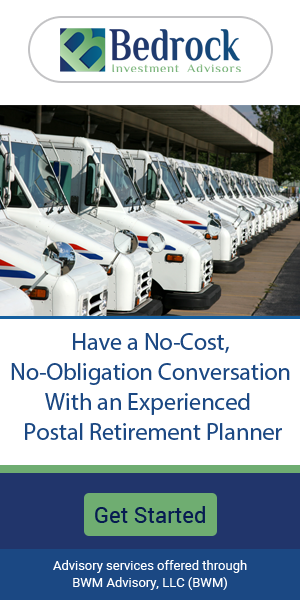Key Takeaways
-
Maximizing your Thrift Savings Plan (TSP) can create a financially secure retirement, especially when you understand the best contribution strategies and withdrawal options.
-
Early planning and informed investment choices can significantly increase your TSP growth, setting you up for success in retirement.
Understanding the Power of Your TSP
- Also Read: FAA, Law Enforcement, and Special Federal Employee Categories—Here’s What Makes Their Retirement Unique
- Also Read: Blending Private and Public Sector Retirement Plans Is Complicated—Here’s Where Couples Get It Wrong
- Also Read: The Silent Shift in Postal Service Retirement Benefits That Could Change Everything by 2026
1. Setting Up Your TSP for Success
Start With Contributions
First things first: contributions are the foundation of your TSP. For 2024, you can contribute up to $23,000 per year to your TSP account, with an additional $7,500 in catch-up contributions if you’re over 50. The more you can contribute, the more you can leverage compounding interest, which is a powerful force for growing your retirement savings over time.
How Much Should You Contribute?
A good rule of thumb is to contribute as much as you comfortably can. Many federal employees aim for 5% of their salary initially, which is the amount matched by the government if you’re in FERS. But don’t stop there! If you can afford to increase your contribution rate, do so periodically.
Pick Your Funds Wisely
Your TSP offers five core funds, each with different risk levels: G, F, C, S, and I. The G Fund is the safest, backed by U.S. Treasury securities, while the C, S, and I Funds offer higher potential returns (and risks) with investments in U.S. and international stocks.
If you’re just starting out, a Lifecycle (L) Fund might be your best bet. These funds automatically adjust the mix of assets over time, becoming more conservative as you near retirement. However, if you have a specific strategy or risk tolerance, you might prefer to select and manage your own mix of funds.
2. Timing Your Contributions and Investments
Benefits of Starting Early
The earlier you start saving in your TSP, the longer your money has to grow. If you’re young and just beginning your federal career, even modest contributions will accumulate thanks to compounding interest. Starting early gives your investments a longer period to weather market fluctuations, providing a smoother growth curve over time.
Mid-Career Strategies
If you’re midway through your career, consider reviewing your asset allocation. Make sure your contributions align with both your retirement timeline and your current risk tolerance. At this stage, many choose to gradually shift a portion of their savings from aggressive growth funds (like the C and S Funds) to more stable investments, balancing growth potential with risk management.
3. Understanding Roth vs. Traditional TSP
Choosing Between Tax Benefits
Your TSP offers both Roth and Traditional contributions, and understanding the difference is key to maximizing your retirement savings.
-
Traditional TSP Contributions allow you to defer taxes now and pay them in retirement. This can be beneficial if you’re currently in a high tax bracket but expect a lower one later on.
-
Roth TSP Contributions mean you pay taxes upfront, but withdrawals in retirement are tax-free. This is ideal if you’re currently in a lower tax bracket and expect it to rise over time.
Deciding between these options will depend on your financial situation and tax expectations in retirement. Many TSP participants split contributions between Roth and Traditional, providing flexibility in retirement to draw income based on future tax needs.
4. Keeping Your Eye on Fees
One of the TSP’s greatest advantages is its low expense ratios. While fees might seem minor, they add up over the years, eating into your returns. The TSP’s fees are some of the lowest in the industry, which makes it an attractive choice for long-term growth. This low-cost structure means more of your contributions go toward investment growth rather than administrative expenses.
5. The Importance of Regular Reviews
Annual Reviews: A Must-Do
Every year, take a look at your TSP balance, contribution rate, and fund allocation. This is essential as your financial goals, risk tolerance, and retirement timeline evolve. Most financial experts recommend rebalancing your portfolio annually to keep it aligned with your strategy.
Adjusting for Life Events
Major life changes—like marriage, having children, or a career shift—can impact your financial outlook and may warrant adjustments in your TSP contributions or asset allocation. By reviewing and adapting, you’ll ensure your TSP stays in line with your current needs and future goals.
6. Making the Most of Catch-Up Contributions
If you’re 50 or older, take advantage of the TSP’s catch-up contribution option, which lets you save an additional $7,500 annually. This can be a game-changer in building your retirement savings, especially if you started saving later in your career or need to make up for lower contributions in earlier years.
Catch-up contributions are also beneficial in helping you reach your retirement targets, particularly if your income has increased and you can afford to save more aggressively. With only a few years to retirement, these extra contributions can make a big difference.
7. Deciding on Your TSP Withdrawal Strategy
Planning for Withdrawals
Your TSP isn’t just about saving—it’s also your income in retirement. Once you reach age 59½, you can begin withdrawals without penalties. However, required minimum distributions (RMDs) kick in at age 73, which means you’ll need to start drawing funds regardless of whether you need them.
There are three main options for TSP withdrawals in retirement:
-
Lump-Sum Withdrawal: Take a single, large distribution, which is generally not advisable due to potential tax consequences.
-
Monthly Payments: This option allows you to receive regular income based on a fixed dollar amount or your account’s value.
-
Lifetime Annuity: You can convert your TSP into an annuity, which guarantees payments for life. However, this may not be ideal for everyone, as annuities can reduce flexibility with your funds.
Selecting the best option will depend on your individual financial needs, tax strategy, and other retirement income sources.
Avoiding Common Withdrawal Pitfalls
One common mistake is withdrawing too much too soon, which could lead to running out of money later. Aim to withdraw conservatively in the early years to allow your TSP balance to continue growing, especially if you’re still healthy and may have a long retirement.
8. Building a Cohesive Plan with Other Retirement Income
Your TSP is just one part of your retirement. It’s essential to consider how it fits with Social Security, any pension you may receive, and other investments. Coordinating all of these income streams will allow you to manage taxes more effectively and maximize your overall retirement security. For instance, drawing from Roth TSP funds in years when you’d otherwise face a high tax rate may help you save on taxes.
Planning for a Secure Future
By making consistent contributions, choosing the right mix of funds, and planning a sustainable withdrawal strategy, you can ensure your TSP serves you well in retirement. Remember, the earlier and more thoughtfully you manage your TSP, the more secure your future can be.













